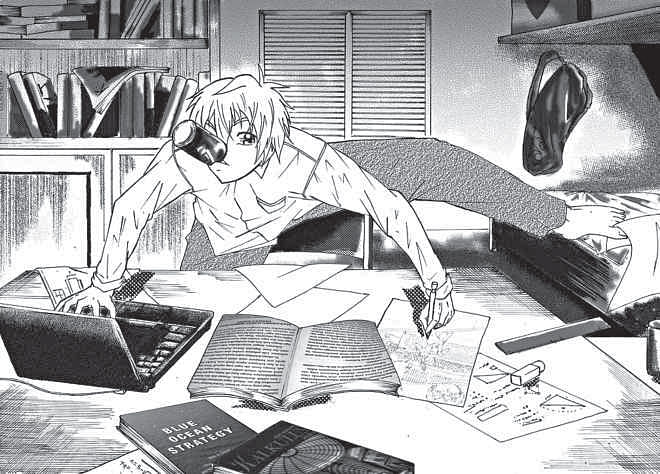The Rigours of a Manga Artist's Life

Since Dragonball Z became a smash hit in the West, the Japanese Manga industry has gone on to become a global phenomenon. Every week, hundreds of manga magazines fill newspaper stands and comic bookstores across the world. And while the people behind the manga are gaining popularity and quite a bit of money, the work that is put into ensuring that the manga are of the highest quality is nothing short of inhuman. Yes, sometimes the workload of a manga artist is borderline crazy.
It's predictable that an artist has to put in a lot of work towards the start of his career. Rejections are commonplace and artists go from door to door, trying to convince editors that their material has the potential to sell. Having to compromise with the integrity of their work is a common phenomenon too. Rumiko Takahashi, creator of Inu Yasha, was asked to drop the romantic elements of her story (which is a huge part of the plot) altogether. Although she refused and went on to succeed, not everyone gets that lucky. Many creators end up writing things they would have never imagined writing before, all for the sake of making a place for themselves in the industry.
You'd think life would get easier once your story gets picked up by a big magazine like Shueisha's Weekly Shonen Jump. But you couldn't be more mistaken. Having a weekly manga means you have to produce 20 something pages of material every week. While musicians can sort of pat themselves on the back after landing a big money record deal, manga artists don't have the time for any of that. The average manga artist doesn't even get six straight hours of sleep. Eiichiro Oda, creator of the legendary One Piece manga, recalls how he used to take a thirty minute nap every four hours. Masashi Kishimoto, the creator of Naruto, hasn't had the time to take his wife on a honeymoon even though they've been married for nearly fifteen years now.
Working for so long in a sitting position obviously has health hazards. Diabetes is common among manga artists, even if they aren't obese. The strain from drawing all day gets to their hands, with tendonitis being a foregone conclusion. Manga artists don't just expect to get tendonitis; they accept it as a way of life.
The going gets easier after the manga starts to grow. But we have to be clear here; “starts to grow” means the story has to sell in thousands. The industry is so large and there are so many sub-genres that the readers are spoilt for choice. Japanese people are overworked themselves and don't have a lot of time put away for anime and manga, contrary to popular thought. To sneak into that little free time is a lot of work. Getting a good anime adaptation deal is the biggest landmark in a manga artist's career. It gives them international exposure and boosts manga sales, the way the anime adaptation sky rocketed the sales of Attack on Titan. Manga artists can then afford to hire assistants. But until then, it's an endless tussle.
If you were to google pictures of manga artists, you'd see that almost everyone looks frail, like they haven't eaten in days and as though they don't sleep much. That's just the price they have to pay for making it in the industry. Why do they do it? I suppose some things are just worth doing.

 For all latest news, follow The Daily Star's Google News channel.
For all latest news, follow The Daily Star's Google News channel. 



Comments